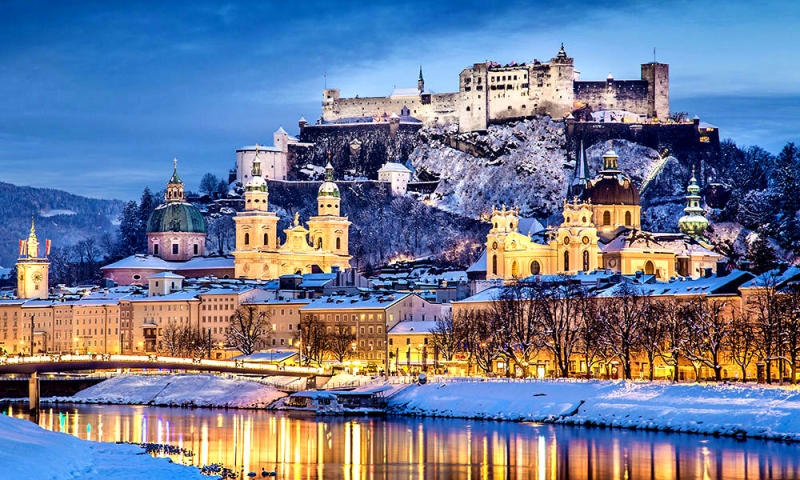
Why seven million guests from all over the world come to this corner of Austria every year? Everyone finds the answer to this question themselves, but we have not yet met people who regret their trip to Salzburg (that’s the name of the city itself , and the federal state of which it is the capital).
History, culture, ethnography, gastronomy, sports, treatment, shopping… whatever area your interests lie, Salzburg will satisfy them to the fullest.
The capital of the region is an extremely atmospheric city, once in which you feel like a time traveler – Salzburgers so carefully try to preserve the attributes of the 18th century. A good example is the McDonald’s emblem, which franchise owners were required to design in the style of the main street Getreidegasse:
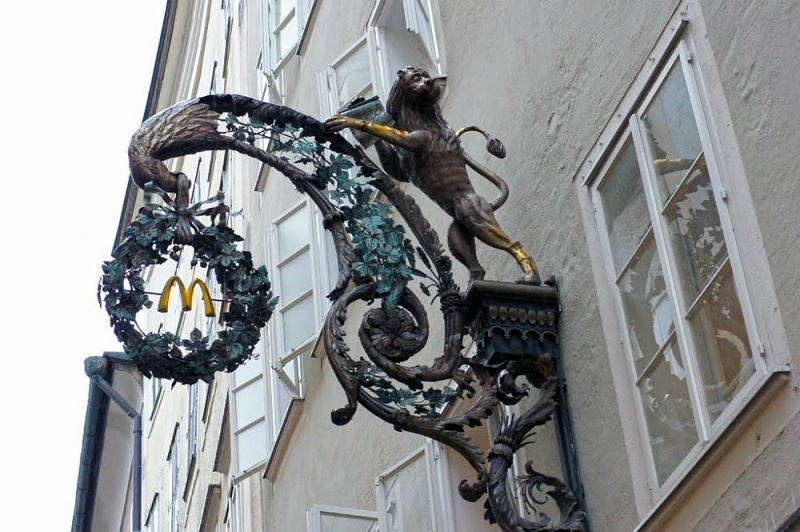
On the same street is the most visited house in Salzburg, No. 9, three floors of which are occupied by the Wolfgang Amadeus Mozart Museum:
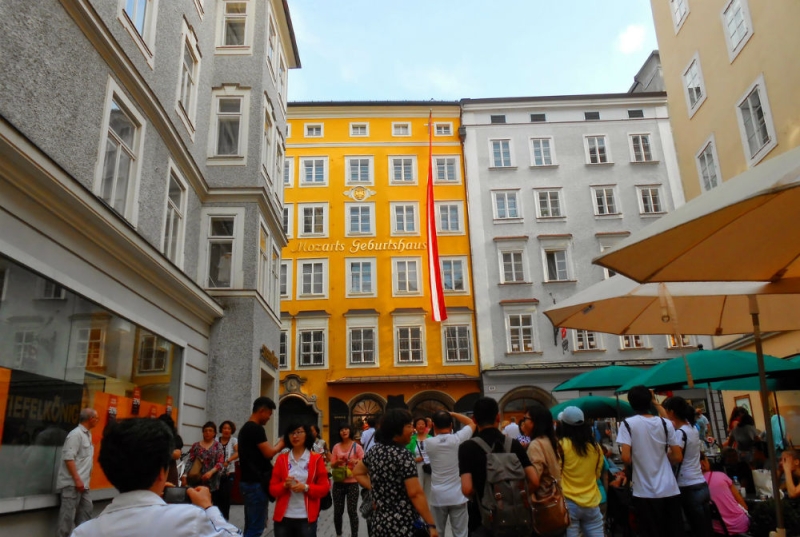
Only 150 thousand people live in the city, a good half of whom are directly or indirectly involved in the tourism industry. The main attractions are concentrated on the left bank, however, there is also something to see and marvel at on the right bank of the Salzach River.
We present to your attention a video recording of an extraordinary excursion, during which the guide tells little-known facts from the biographies of Salzburg celebrities, as well as details about the sights known only to historians and art critics:
Part 1
Part 2
Brief dossier
Salzburg is located in the north-west of Austria, 5 kilometers from the border with Germany. People have lived here since Neolithic times. In the middle of the 1st millennium BC. e. The region was settled by the Celts, then the ubiquitous Romans came here, founding them in 45 AD. e. military settlement Yuvavum. In the 5th century AD e. The Roman legions retreated under the onslaught of warlike Germanic tribes, but a century later the Catholic Bavarian dukes defeated the Vandals and installed Bishop Rupert at the head of the region, who founded the male abbey of St. Peter and the convent of Nonnberg, which have survived to this day. By the way, Rupert, posthumously canonized, became the patron saint of the region.
Officially the name “Salzburg” was established only in 739 AD. e., as well as a unique form of government – a free clerical principality under the control of archbishops. The end of independence was put by Napoleon, who conquered these lands in 1803. Two years later, under the terms of the Peace of Presburg, the region became part of Austria-Hungary, from 1810 to 1816 it was part of Bavaria, after which it finally became Austrian.
Salt is everything!
The aforementioned Celts were the first to discover here rich deposits of salt, which in those days was worth its weight in gold: after all, before the invention of the refrigerator, it served as the most effective means of preserving perishable foods. Therefore, it was salt (German – Salz) that formed the basis for the names of the city (Salcburg – salt castle) and the river on which it stands (Salcah – salt stream).
By the way, if you wish, you can go on an excursion to the ancient salt mines, located half an hour from Salzburg.
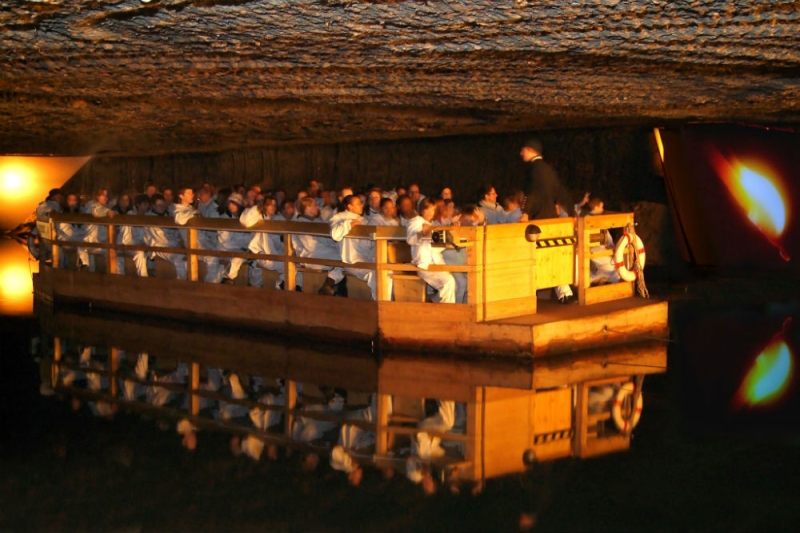
Well, when deposits of gold and silver were discovered here at the turn of the 13th-14th centuries, the region became one of the richest in medieval Europe.
Modern Salzburg is not only a point of attraction for tourists from all over the world, but also a developed industrial city, in the vicinity of which there are numerous high-tech enterprises (automation, software, telecommunications, multimedia, etc.). The only sector of the economy that has survived since the Middle Ages is the production of beer and mineral water.
When to come, how to get there, where to stay
Salzburg is beautiful at any time of the year, so travel dates are important only for those who want to combine excursions with skiing. The season at numerous ski resorts lasts from December to April.
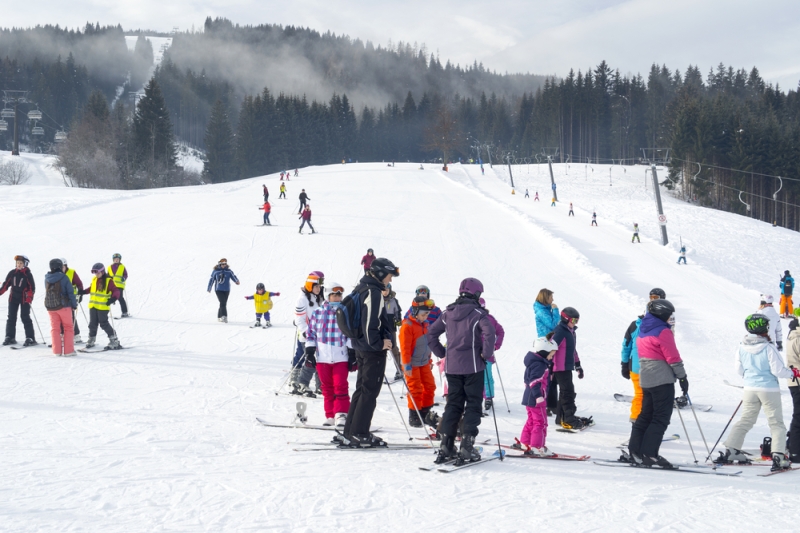
The pleasure is not cheap, but in addition to active recreation, any of the listed resorts provides stunning views, the highest service, comfortable accommodation, swimming pools, SPA and excellent food.
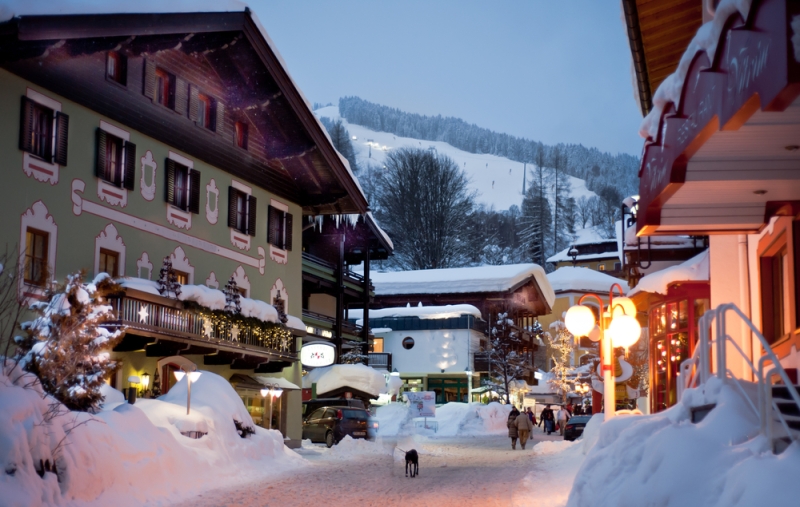
Most “organized tourists” arrive in Salzburg on excursions from nearby Munich (144 km) and Vienna (296 km),
as well as from more distant places – Budapest, Bratislava, Prague, etc. Of course, the longer the journey, the less time is left to get to know the city. Sightseers have time to gallop through the right bank Mirabell Garden
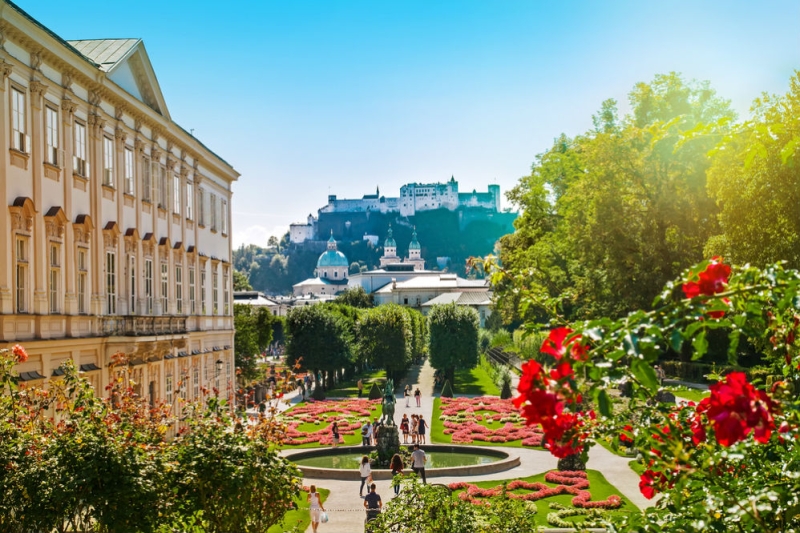
and the left bank old town, while on the go sipping on the old Stiegl beer and buying the cult candies “Original Salzburg Mozartkugel”, which are sold only in cafes and shops with the “Fürst” sign:
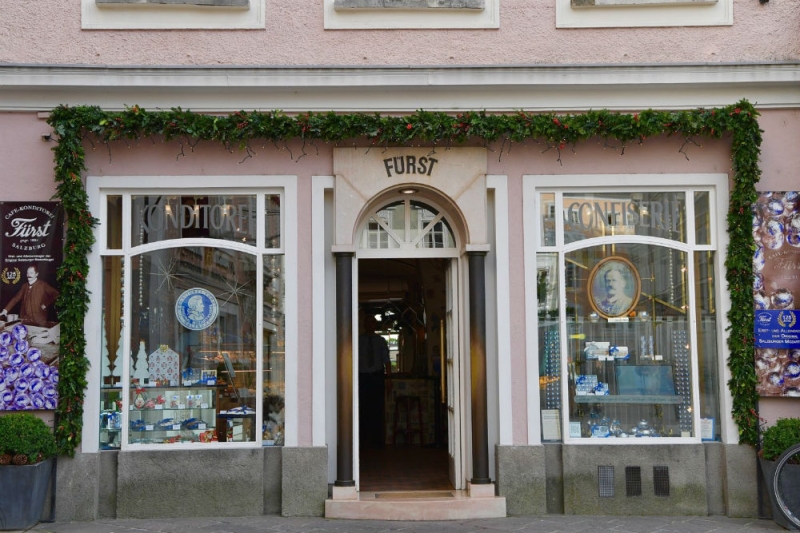
The brand was created in 1884 by local confectioner Paul Fürst, who was awarded the original monument:
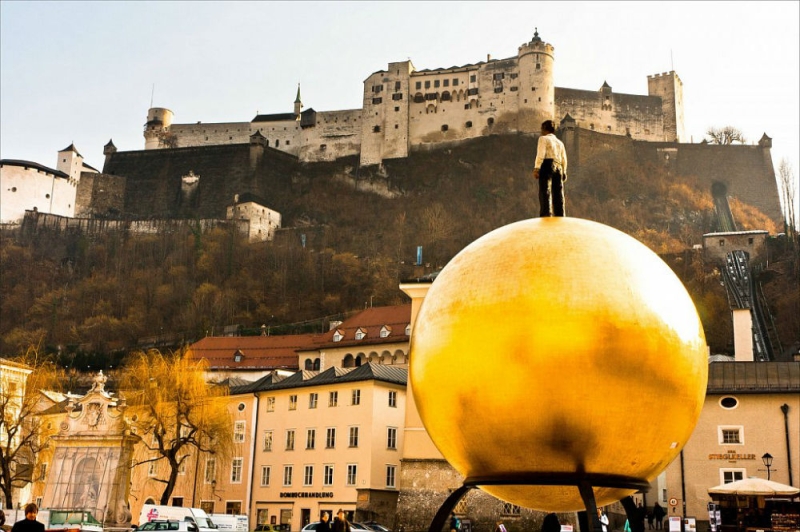
Fake monument to the creator of candy
However, the sculptor (more precisely, the installer) played into the hands of Furst’s competitors, since the balls are goldenthe wrapper is clearly a fake. The original “Mozartkugel” is wrapped in silver foil with blue ornaments:
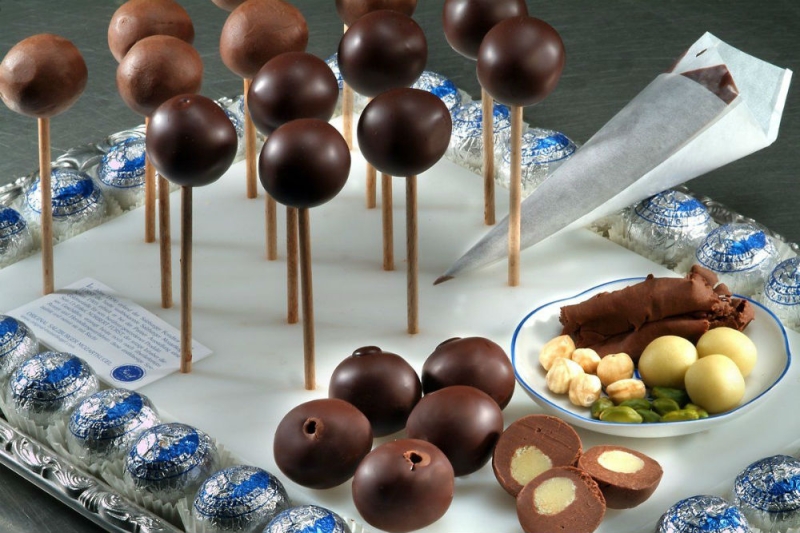
Independent travelers can afford to spend two or three days in Salzburg – the optimal period for leisurely sightseeing. It will take at least a week to get to know the incredibly cozy “gingerbread” towns of Salzburg, but it’s worth it.
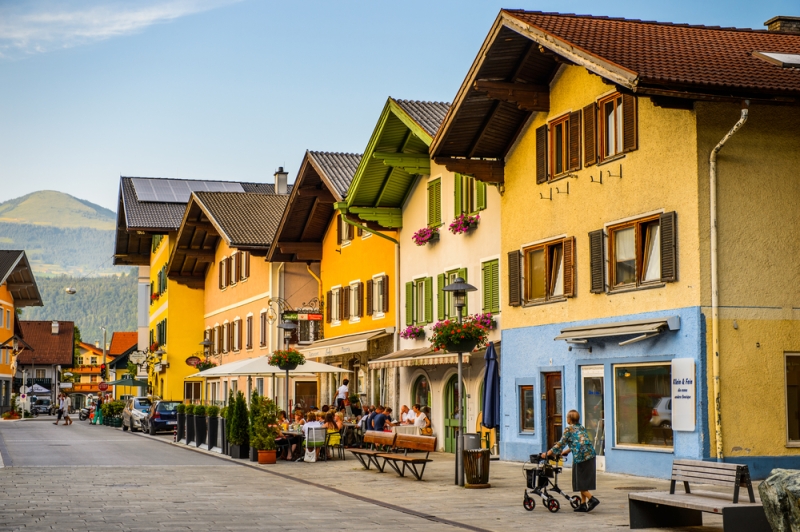
Gingerbread town of Kuchl
Tickets for the Munich-Salzburg train can be purchased here; “Vienna-Salzburg” – here. Bus tickets from Munich – here; from Vienna – here.
Hotels, as always, can be found here. When choosing, pay special attention to the rating.
Practical recommendations
The first successful purchase for guests arriving in Salzburg for 1-3 days will be the Salzburg Card, which allows you to save a lot when traveling on public transport and visiting almost all museums.
24-hour card costs €24/12 (adult/child 6-15 years old); 48-hour card – €32/16; 72-hour – €37/18.5. You can buy it everywhere, starting from the railway. and bus station upon arrival, or online in advance. For children under 6 years of age, travel and visits are free.
Be sure to take waterproof clothing, shoes and an umbrella on the trip. Situated in a mountain gorge, the city seems to attract rain, fortunately not for long:
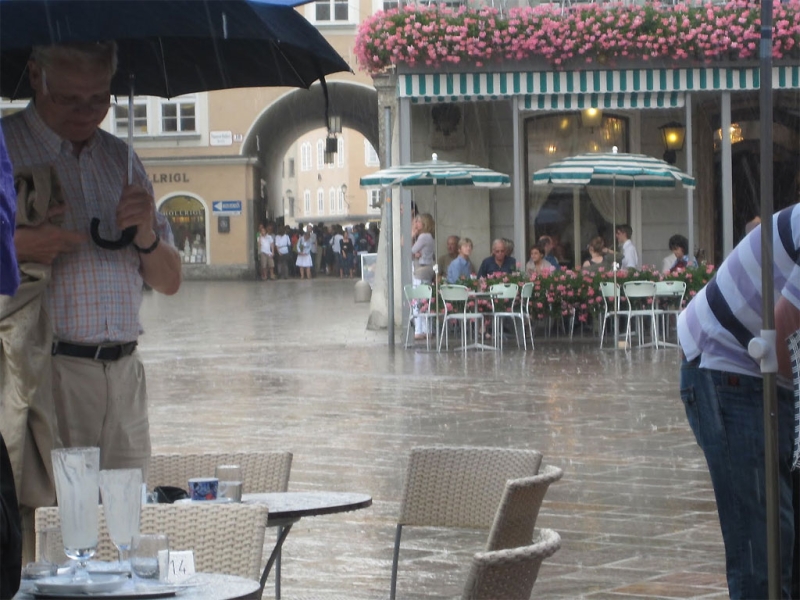
Beer lovers will love the Augustiner brewery pub, which is very popular among locals:
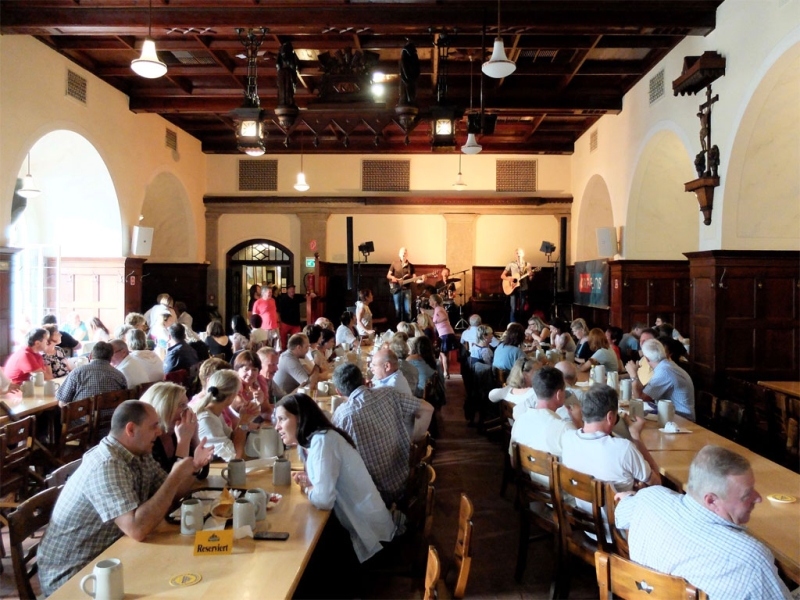
During the warmer months, the pub space expands due to the huge Augustiner Braustübl Beer Garden:
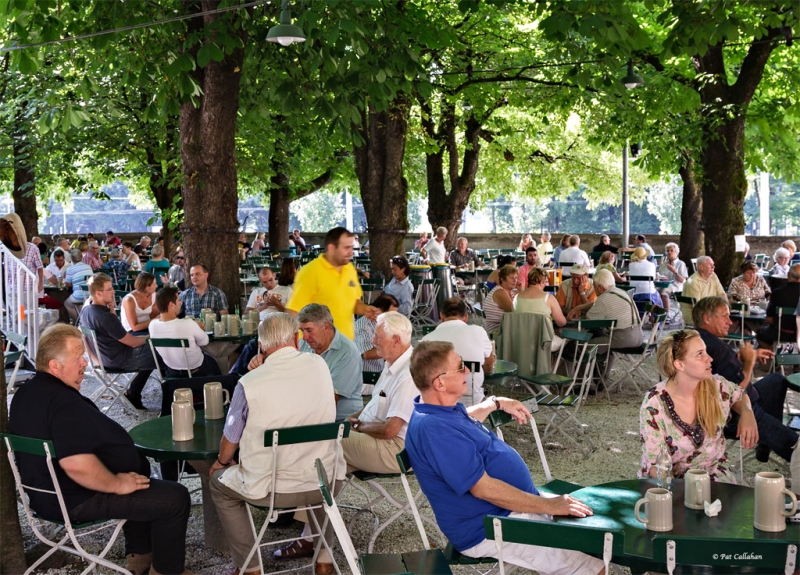
In conclusion
…let’s talk about a curious building in the old town at Alter Markt 109. Here is one of the narrowest houses in the world (the narrowest is in London, another “record holder” is in Amsterdam, however , the difference is plus or minus 10 centimeters).
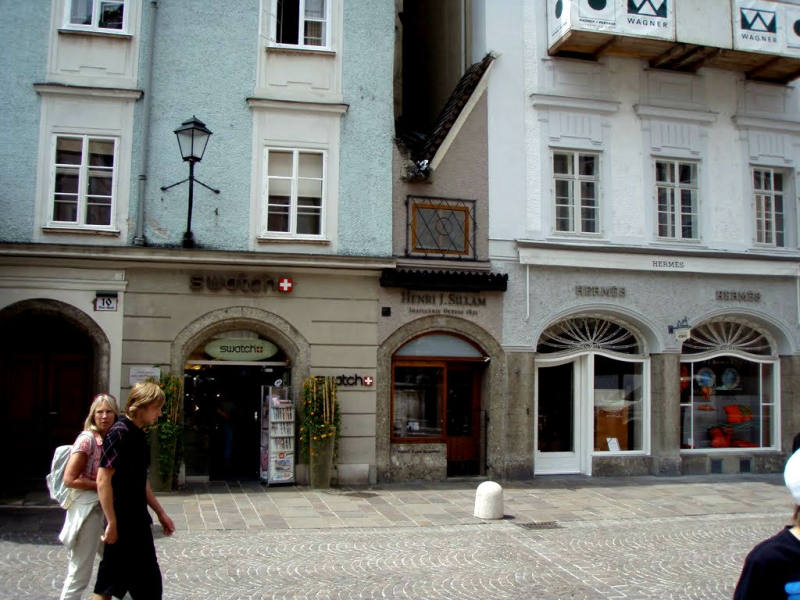
Legend has it that one day a poor young man fell in love with the daughter of a Salzburg rich man and asked for her hand in marriage. The father set a condition: the applicant would receive the blessing only if he built a house in the city center. And the young man, having mobilized all resources, managed to pay for the construction of a one-and-a-half-story house with a facade width of less than 1.5 meters.
On this touching note we will end the conversation about Salzburg.


